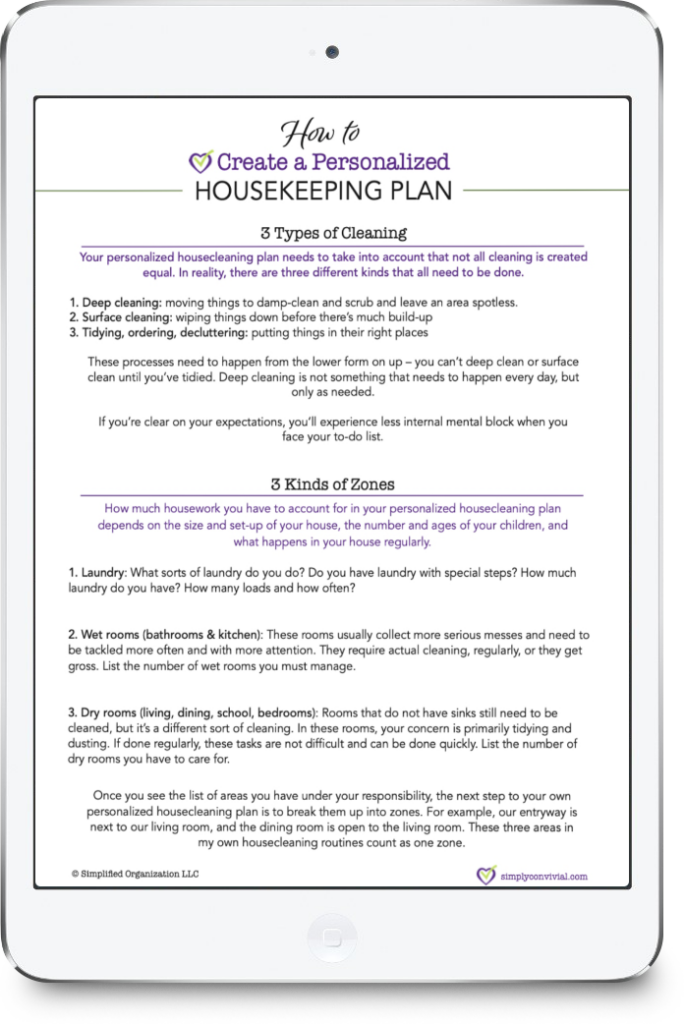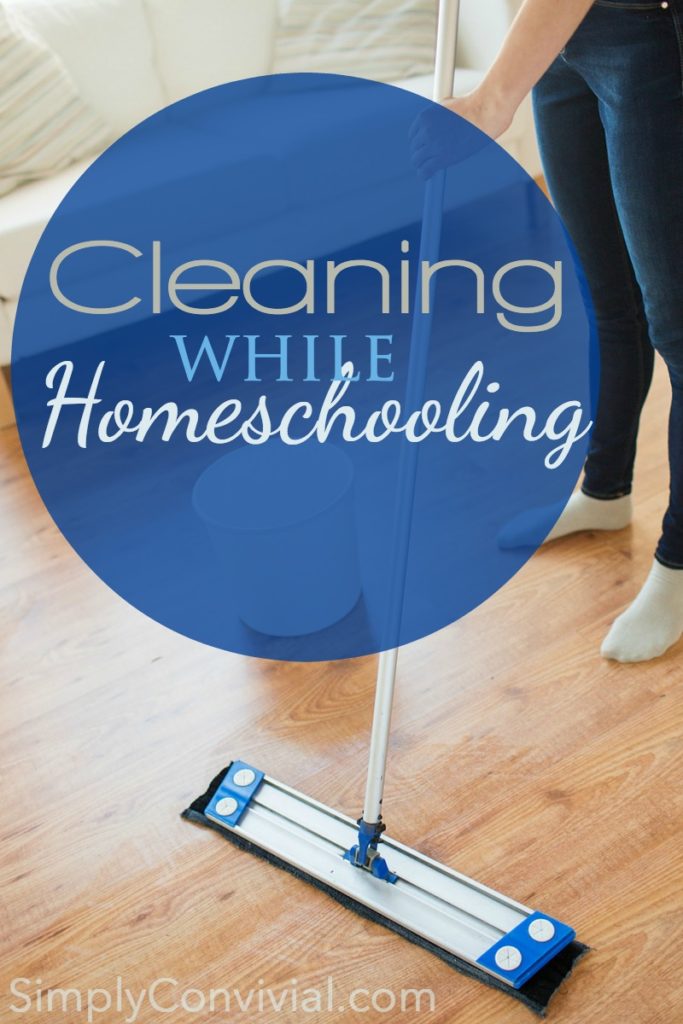Cleaning and I have a complicated relationship.
I am naturally a Messie. I can easily cultivate my oblivion to the state of my house as well as my disdain for the menial, always-needing-to-be-redone work.
But I am slowly, continually, reforming – repenting. After all, I know Elisabeth Elliot is right when she writes:
The way you keep your house, the way you organize your time, the care you take in your personal appearance, the things you spend your money on, all speak loudly about what you believe. The beauty of thy peace shines forth in an ordered life. A disordered life speaks loudly of disorder in the soul.
“The beauty of Thy peace” is a worthy thing to strain after, and the way I keep my house is not unrelated. Moreover, it is one way to communicate that peace to my children – through the atmosphere of our home. Chaos is not conducive to peace or rest.
Here’s what that looks like for us, in the nitty-gritty, lately.
Know Your Overarching Cleaning Goal
Your expectations matter.
One thing that kept me from implementing or enjoying my cleaning routines in the past was a wrong-headed goal. I thought the goal of cleaning house was to have a clean house.
I was wrong.
When I changed my goal for cleaning to “clearing to neutral,” I cleared the way not only for momentum and progress, but also for satisfaction in the work. The fact that it is constantly undone soon after it is done is baked into the reason we clean rather than a threat or frustration.
Well, ok, I still get frustrated, but at least now I know I’m wrong and why I’m wrong, and I can repent and turn to do the next right thing.
Here’s what the next right things are in our current system:
Work the Interval Plan
I plan and work within a 6+1 week rhythm. We school for 6ish weeks, then take a break week, homeschooling year round.
This affects our housekeeping rhythm, for sure.
Although the break week is off of school, it is not a complete vacation. Instead, it is a week to plan and prepare for our next productive round. Cleaning is a large part of the preparations.
Usually, after 6 weeks of schooling and only barely keeping up with the basics around the house, there are a few places around the house that are driving me crazy. If I can clear those out and establish some order there, I feel reenergized. It’s not usually a huge job, just one with a lot of visual or emotional payoff.
Once it was bedroom closets. Sometimes it’s been the storage room or the coat closet. Last break week, it was re-sorting the toys. This break week (after Easter) it will be doing a thorough wet dusting sort of spring cleaning session, wiping down chairs, tops of cabinets, walls, baseboards – that sort of thing. Totally extra, in my book, but I’ve been noticing the build up lately and it will feel good to tackle it.
I also try to catch up on any laundry backlog, wipe down the kitchen cabinets and appliances, clean out the fridge and maybe even get in a complete mop-scrubbing of the floors.
I don’t usually get to all of my cleaning list over break week, but as long as I work from priority-order, I usually make a good dent in it.
Work the Weekly Cleaning Plan
When we’re in homeschooling mode, we use our house hard and don’t have a lot of time and energy left to do a bunch of deep cleaning.
So my goal is simply to try keep things cleared to neutral, ready to be used again, not showcase pristine (they never are that).
That means at some point in the week I try to
- wash sheets
- clean my stove
- mop
- clean the toilets
Cleanies, shut your eyes now and pass on to the next point. Even if each one only gets done every other week, I count it as still doing pretty well. :) Realistic expectations help a lot.
Work the Daily Cleaning Plan
First point: Kids should be doing chores. If they are 8+, their chores should be a real help.
Every morning between breakfast and starting school, my 8-year-old unloads the dishwasher, loads the breakfast dishes, and wipes down the counter where breakfast was served. My 10-year-old mops or vacuums the floors in one room of the house on rotation. My 12-year-old cleans one of two bathrooms, so each one gets cleaned (more or less) every other day. The 6-year-old clears & washes the dining room table after breakfast so it’s ready for Morning Time and the 3-year-old sometimes empties the garbages from the bathrooms.
Second point: Take into account the level of activity you have each day before making a daily cleaning routine and have room in your week for a catch-up day. For us, that’s Saturday.
Third point: Homeschooling families need a regular EHAP time. EHAP (say EE-HAP) stands for Everything Has A Place and, in our house, is used as a verb that means return everything to its proper place. An afternoon tidy time makes all the difference. Books, toys, papers, pencils, random junk – they all get strewn throughout the day, and everyone needs to be in the habit of picking things up regularly (myself included). When everyone pitches in, it doesn’t take too long. Plus, it helps me stay calm when I start looking around the living room hyperventilating because of ALL.THE.STUFF.
My current plan is to do a little bit of the essentials every day rather than have big cleaning days. I found the big cleaning days encouraged my procrastination, and if the scheduled time didn’t happen, I would wait until the next one and suddenly the house would be a disaster. Plus, we regularly have people over, so by doing a little bit most days, the house stays in a mostly acceptable state where it’s no big deal to do a tad more and be ready for company.
So, most days, I:
- Clear & wash counters
- Sweep the kitchen and at least one other room
- Do 1-2 loads of laundry
- EHAP for 10ish minutes wherever needs it most




I love the EHAP reference. In our house the term used is “away away”, which means put every item in its real place, not just a new place. Great post. Good ideas.
I love the EHAP reference. In our house the term used is “away away”, which means put every item in its real place, not just a new place. Great post. Good ideas.